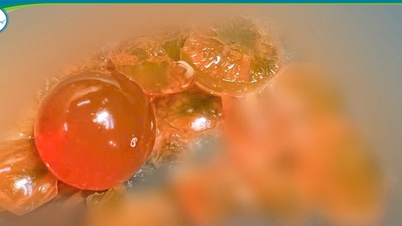Cucumber has long been considered a cool, crunchy, sweet, heat-relieving vegetable and is affordable.
However, sometimes consumers encounter bitter fruits, many people still keep the habit of throwing away the top or continue eating because they think "bitterness is due to the variety".
Bitter taste in cucumbers

Cucumber has long been considered a refreshing, crunchy, sweet, cooling vegetable with an affordable price (Photo: Getty).
According to botanical studies, the bitter taste in cucumbers comes from cucurbitacins – a group of triterpenoid compounds produced by cucurbitaceae plants (including cucumbers, pumpkins, squash, bitter melon, etc.) to defend themselves against insects, pests and adverse environmental factors.
Normally, the cucurbitacin content in ripe fruit is very low, not enough to be detected by taste. But when the plant is subjected to growth stress such as high temperature, drought, intense light, poor soil nutrients or using unstable varieties, the synthesis of cucurbitacin can increase dramatically.
At this time, the compound will spread from the leaves and stems into the fruit, especially accumulating at the top of the stem or flower head, creating a distinct bitter taste.
An analysis in the Journal of Agricultural and Food Chemistry showed that when cucurbitacin concentrations exceed 30ppm, some people may experience gastrointestinal symptoms after just 30 minutes: nausea, abdominal pain, vomiting.
At higher levels, this compound can be toxic to the liver and kidneys. Cucurbitacin is heat-stable, not destroyed by boiling, baking, frying or pickling. Therefore, if the original ingredient is bitter, no amount of cooking will completely eliminate the risk.
Lessons from cucurbitacin poisoning cases
Cucurbitacin poisoning has been reported in many countries through cases of eating bitter-tasting pumpkin and zucchini.
In the Czech Republic in 2024, a healthy woman suffered severe abdominal pain, vomiting, and diarrhea after eating bread made from homegrown, very bitter zucchini.
Tests confirmed that cucurbitacin was the cause. Dr. Babeta Čápková (Tomas Bata Hospital) said that the bitter taste was the only signal that the compound was at a dangerous level.
Although poisoning is rare, severe cases can lead to low blood pressure, dehydration...
In 2018, two women in France experienced vomiting and diarrhea after eating bitter-tasting pumpkin soup. A few weeks later, they developed hair loss – a rare symptom thought to be related to cucurbitacin toxicity.
Medical experts warn that “toxic squash syndrome” is rare but can occur if users are subjective about the bitter taste.
How to recognize and advice from experts
According to Veronica Tegen, a board member of Midwest Fruit Explorers, the safest thing to do when encountering bitter cucumbers is to discard them completely, even if you only taste a slight bitterness. Simply cutting off the top is not a guarantee of safety because cucurbitacin can be unevenly distributed throughout the fruit.
To limit the risk, Ms. Tegen recommends choosing less bitter melon varieties, while ensuring cool growing conditions, adequate water, and avoiding periods of intense heat or prolonged drought.
Additionally, some folk remedies like rubbing the cut end with the stem to create a white foam – where cucurbitacin is concentrated – can help reduce the bitterness but do not completely eliminate the risk in fruits with high levels.
Observing the appearance is also helpful: good fruit usually has a medium dark green color, shiny skin, sparse soft spines, and a slightly curved natural shape, while bitter fruit can have a dark color, wrinkled skin, and loss of moisture.
Source: https://dantri.com.vn/khoa-hoc/dua-chuot-bi-dang-an-hay-bo-20250815082814124.htm







































































































Comment (0)